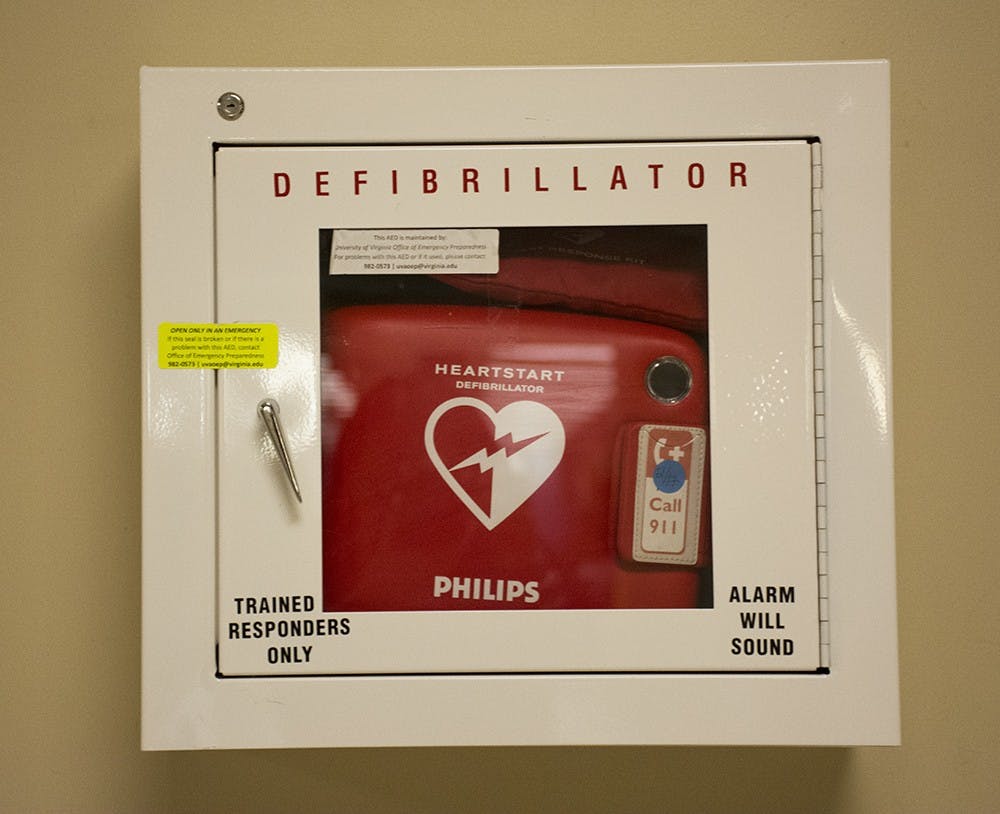The University was recently named a HEARTSafe Campus by the National Collegiate Emergency Medical Services Foundation due to its strong commitment to public awareness as well as its extensive Automated External Defibrillator program.
“We absolutely hope any member of the U.Va. community, any student, faculty or staff member, would act if seeing someone in cardiac arrest by recognizing something is wrong,” Lucian Mirra, Office of Safety and Emergency Preparedness program coordinator, said. “For example if someone is unconscious and not breathing, then activate the emergency response system by calling 911. Calling 911 is the most important thing to do in this situation.”
AEDs can correct sudden cardiac arrest, which is responsible for one death as often as every 37 seconds in the United States. Quick response time is significant in such a situation, and it is vital that members of the University community are prepared to act in the face of emergency.
“Cardiac arrest does occur in younger people, although it is more common in older individuals,” Dr. William Brady, professor of emergency medicine, said. “ Appropriate treatment, provided at a very early stage of cardiac arrest, can be life-saving.”
Treatment for cardiac arrest starts with identifying someone going into cardiac arrest. The next step is to call 911, then begin chest compressions and use an AED as soon as possible. Waiting even two to five minutes can make the difference between saving someone’s life and being too late.
“Anyone on Grounds is capable of providing this care and, therefore, of saving someone's life,” Brady said.
There are various locations across Grounds where an AED can be located, including both
academic and administrative buildings. A full listing of where AEDs are located on Grounds can be found on the University Emergency website.
“The AED device itself is very simple to operate,” Brady said. “The device provides simple, step-by-step instructions, guiding the rescuer through operation of the device and, thus, potential life-saving care for the victim. In fact, it is likely easier to operate than most home entertainment systems.”
CPR training is also available to anyone on Grounds, and registration information can be found on the OSEP website.
“We teach our staff to start chest compressions and use of the AED as soon as possible,” Mirra said. “The AED will correct the situation, so the faster one is applied the better. Students should know where they’re located on campus. Our outreach is focused on practice for staff and faculty members but we are planning on a large CPR training program for students in this spring and fall.”







